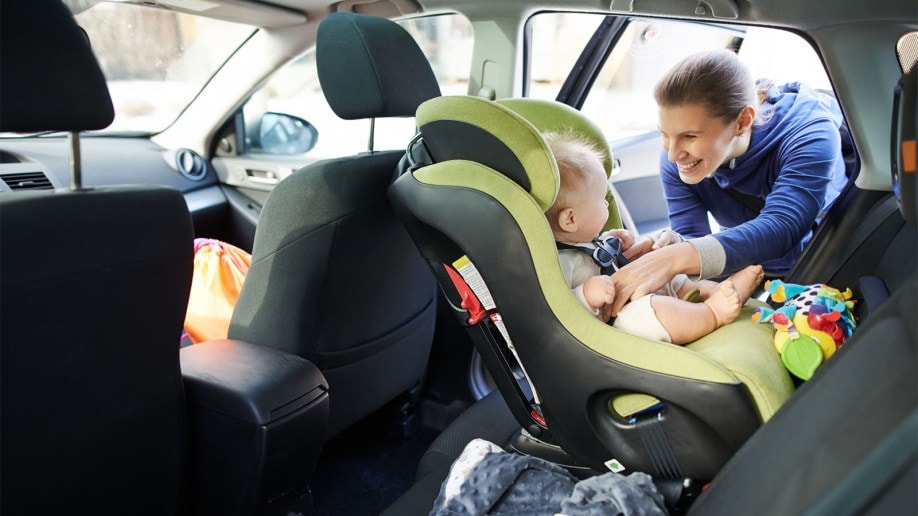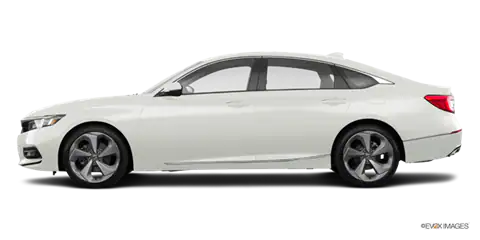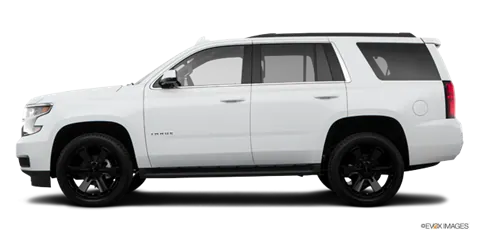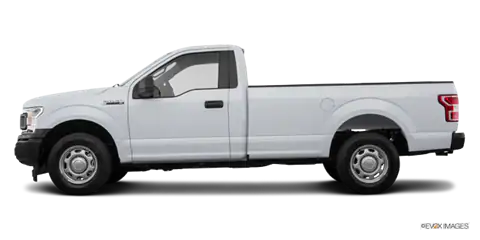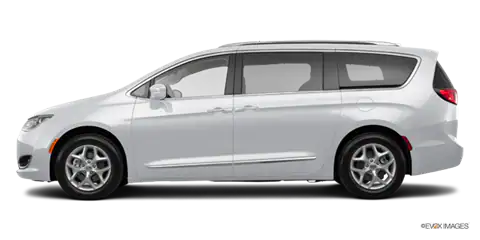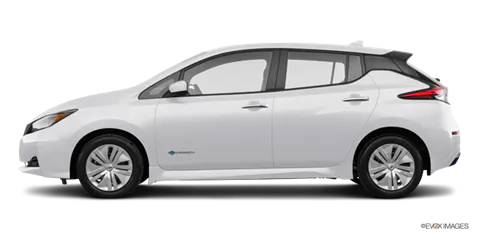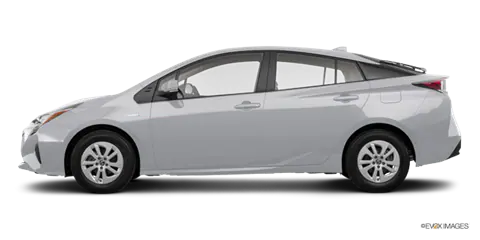- Look for tether anchors in all seating positions
- Seat belts shouldn’t overlap adjacent seating positions
- Removable headrests allow better fit for some forward-facing car seats/high-back boosters
- Center seat should be wide enough to accommodate a narrow booster
- Second-row room should fit a rear-facing car seat with front seat set for tallest driver
- Seat belt pretensioners for kids in boosters or older kids/adults in back
Dr. Alisa Baer, Pediatrician and co-founder of The Car Seat Lady, has used her years of experience evaluating car seats to provide data-backed recommendations for family cars that can best accommodate car seats. Here are her picks, and why she chose them.
Keeping families safe in cars is our mission at The Car Seat Lady, and we’re pleased to share a few tips for buying your next family vehicle with both safety and space in mind. To simplify your search even more, we’re sharing our favorite choices for 2-row SUVs, 3-row SUVs, full-size SUVs, and minivans. As you know, safety is a key factor when shopping for a family car, so be sure to look at the information the Insurance Institute for Highway Safety (IIHS) has compiled.
Room for kids and cargo
You’d be surprised how many vehicles marketed to families do an exceptionally poor job of fitting multiple car seats. Common design flaws that restrict multiple car seat use are rigid seat belt buckles — flexible ones can move out of the way more easily — and seat belt overlap, where the seat belt for one position is located in an adjacent position. Since plastic car seats and human bodies can’t overlap with each other, overlapping seat belts can pose significant challenges to fitting car seats or people side by side. In the list of recommended vehicles below, we’ve selected vehicles that do not have any seat-belt overlap.
When it comes to second-row seating and the choice between a bench and captain’s chairs, we’re team bench 100 percent of the time. See why The Car Seat Lady recommends bench seats. This will help with both safety and capacity.
Get your LATCH on
You should also consider LATCH compatibility when assessing whether a new 3-row vehicle is right for your family. LATCH — Lower Anchors and Tethers for Children — is a vehicle’s system of metal bars that secure car seats. Lower anchors are typically used instead of the seat belt as a means of installing the car seat. Tether anchors are used on every forward-facing car seat (and a growing number of rear-facing ones) in addition to the lower anchors or the seat belt to provide extra protection for the brain and spine.
Unfortunately, many 3-row vehicles (and even some minivans) don’t exceed the government minimum for LATCH, which is three tether anchors and two lower anchor positions. A lack of lower anchors isn’t a deal-breaker, because you can use the seat belt to install a car seat instead of the lower anchors. However, if you’ll have kids in forward-facing car seats, a lack of tether anchors in any seat where the kids might ride is a deal-breaker because every forward-facing car seat needs to be tethered, regardless of whether it is installed with the seat belt or lower anchors. The Car Seat Lady site lists tether and lower anchor locations for almost every vehicle in the U.S. since 2000.
Check for pretensioners
A key safety feature to look for is pretensioners in the rear seat belts. Pretensioners tighten a seat belt in the first milliseconds of a crash, which makes the seat belt much more likely to stay put on the proper parts and reduce a body’s movement in a crash, lowering the risk of injury. Studies show that pretensioners are especially effective, even among children, at preventing the body from falling sideways out of the seat belt in a side impact. Front seat belts have had pretensioners for more than 20 years in most cars — but only one-third of 2020 vehicles have them in the rear seat, and the majority of those vehicles are expensive German and Swedish models.
Our Picks
Here are The Car Seat Lady’s recommended SUVs and minivans for families. But first, a quick note on the abbreviations we’ll use to describe specific seating positions:
- 2D: Second row, driver’s side
- 2C: Second row, center seat
- 2P: Second row, passenger side
- 3D: Third row, driver’s side
- 3C: Third row, center seat
- 3P: Third row, passenger side
2-Row SUV Recommendation
The 2020 Subaru Forester is the best compact SUV on the market for families. It combines cutting-edge safety technology, including Subaru’s new Driver Focus, with a vehicle that is tidy on the outside (great for street parking) and very roomy on the inside. The high roof offers better visibility and, coupled with the large sunroof, makes the vehicle feel much larger inside than its small size would suggest. The Forester has more functional interior space than its competitors and can accommodate a variety of car seats in 3-across scenarios. Plus, adults in the front seats have more legroom, even with rear-facing car seats behind them, thanks to a deeper second row than competing SUVs.
Subaru Forester:
LATCH
Tether anchors: in all three rear seats
Lower anchors: Two fully independent positions – 2D and 2P. 2C has a lower anchor that is shared with 2P – which can only be used for car seats (not boosters) and will make one car seat take up two positions (2C and 2P).
3-Row SUV Recommendation
We have two recommendations for non-luxury 3-row SUVs, depending on your family’s unique needs: the 2020 Volkswagen Atlas and the 2020 Subaru Ascent. The Ascent has more safety features. The pretensioners in 2D and 2P make it an ideal choice for families with older kids in boosters and seat belts — but has less flexibility to fit multiple car seats while preserving third-row access. The Atlas is ideal for fitting multiple car seats and preserving easy access to its roomy third row and still ranks highly on safety metrics. If you’re a family with three small kids, we recommend the Atlas. For all other families, especially those with bigger kids in boosters and seat belts, we recommend the Ascent.
Atlas:
LATCH
Third Row Access with Three-Across Second Row: Car Seat Safe Lift + Slide
Ascent:
LATCH
Third Row Access with Three-Across Second Row: Limited options
Full-Size SUV Recommendation
The 2020 Ford Expedition (and its more expensive twin, the 2020 Lincoln Navigator) is our full-size SUV top pick. The Expedition and Navigator are much roomier in the second and third-row than the competition, offer lift-and-slide mechanisms for easy third-row access without disturbing car seats, have LATCH in most rear seats, have head restraints in all rear seats, and offer inflatable seat belts in 2D and 2P that significantly improve safety (similar to pretensioners).
Expedition:
LATCH
Third Row Access with Three-Across Second Row: Car Seat Safe Lift + Slide
Minivan Recommendation
The 2020 Honda Odyssey is our favorite minivan, hands down. Like all minivans, the Odyssey’s third row is just as roomy as the second row — in contrast to SUVs, whose third rows are much shallower than the second rows. This increased third-row depth allows rear-facing kids to sit in the way back and decreases the risk of head injury for forward-facing kids and adults in the third row. Overall, the Odyssey is better than all other minivans at fitting lots of kids. With tethers in every rear seat and lower anchors in all but one — not to mention removable head restraints in all seats — you’ll find greater compatibility with car seats and boosters. There are a lot of ways to access the third row, even with three car seats across the second row. The Odyssey isn’t perfect: we wish it had pretensioners in the rear seats to protect kids in seat belts, and rear autobrake to prevent more crashes (especially backover deaths of children), but overall the Odyssey is a very solid choice for families’ safety and space.
Odyssey:
LATCH
Third Row Access with Three-Across Second Row: Car Seat Safe “Walk-in Mode”
